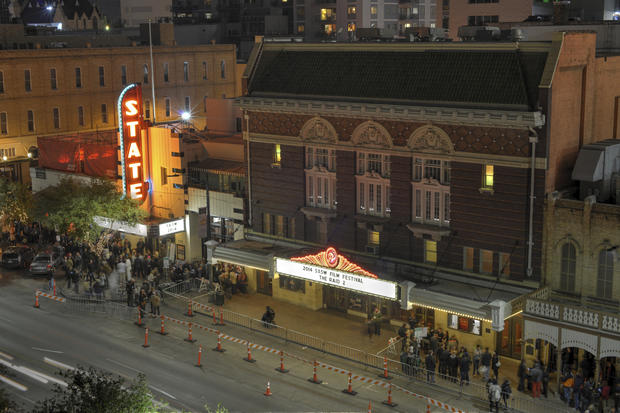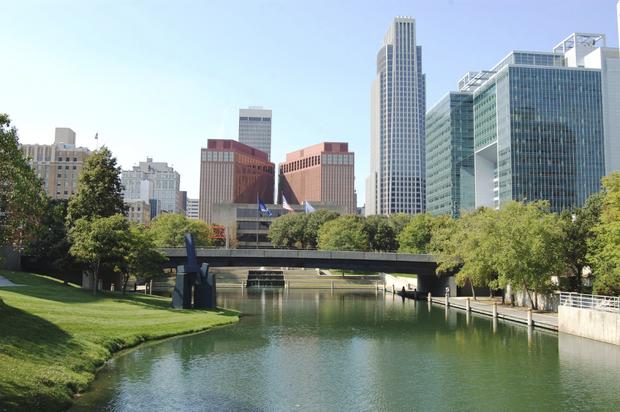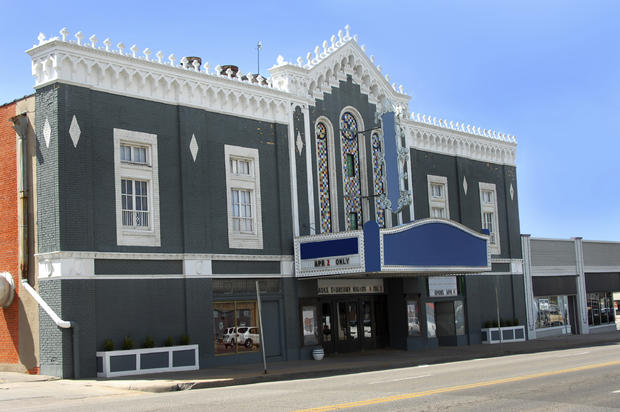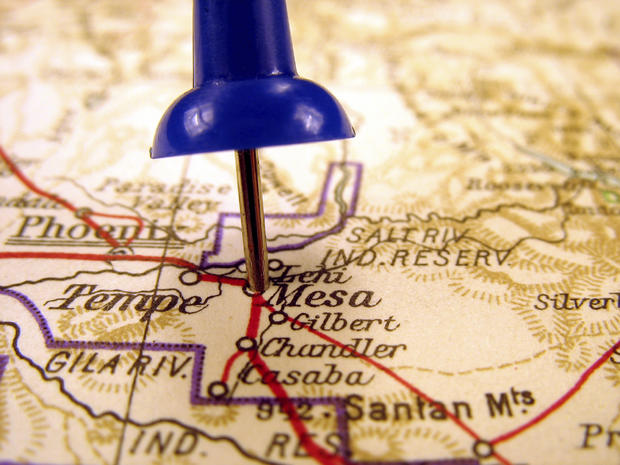10 cities where your paycheck goes farther
By Alaina Tweddale/GOBankingRates
If you're planning on moving to a different city in the near future, make sure you get a realistic view of how far your current paycheck will take you.
GOBankingRates.com set out to find out where your dollar stretches the furthest in the U.S. The study looked at the nation's 50 largest cities and compared the cost of living -- which includes the local price of necessities and a 50-20-30 budgeting rule (50 percent for living essentials, 20 percent to cover financial obligations, and 30 percent for lifestyle expenses) -- to the median family income. From there, GOBankingRates was able to determine the actual income needed to live comfortably in each city.
The end result? The top 10 cities with the greatest difference between the actual income needed to live comfortably and the median household income for that city. The higher the difference, the longer your paycheck will last.
Click through to see in which 10 cities your paycheck will go the furthest.
This article was originally published by GOBankingRates.
10. Austin, Texas
Out of all the cities on this list, Austin has the highest rent cost at $1,100 per month for a one-bedroom. Still, although the median household income is $55,216 in this city, residents only need about $53,225 to live comfortably -- which means the typical resident will have a surplus of nearly $2,000 after budgeting for necessities, savings and discretionary spending.
If you're a music lover, you'll probably end up spending some of your discretionary fund on Austin's music scene. This Texas city is known for its live music, with musicians playing everywhere from grocery stores to music festivals, including the popular Austin City Limits and South by Southwest festivals.
9. Oklahoma City, Oklahoma
If you plan on moving to Oklahoma City, home of the Oklahoma City Thunder basketball team, make sure you're making at least $44,180 -- not so you can buy tickets to the game but so you can live comfortably.
Fortunately, living in Oklahoma shouldn't hurt your budget too much. The median monthly rent for a one-bedroom is only $670, groceries will set you back $314 each month, and healthcare is only about $209 a month.
However, you might want to think of ways to lower your utilities bills in Oklahoma City. These expenses will eat about $172 of your budget each month.
8. Omaha, Nebraska
When it comes to rent ($769), groceries ($286.7.05) and utilities ($124.05), Omaha residents save money when compared to residents in other cities.
However, Omaha's transportation costs are as high as Bakersfield's, Albuquerque's, Colorado Spring's and Wichita's transportation expenses. Considering that the average cost to own and maintain a car for three years in the U.S. is $11,227 in addition to the car's sticker price, people looking to move to Omaha should keep these costs in mind. But with a surplus income of a little more than $3,000, many Omaha residents will likely find this expense manageable.
Not only is this city the home to Berkshire Hathaway CEO and famous investor Warren Buffett, but it's also home to the 2016 NCAA College World Series and the second-largest rodeo in the world.
7. Albuquerque, New Mexico
You only need to earn about $43,895 per year to live comfortably in Wichita. But with a median household income of $47,413, many residents have a few thousand dollars in surplus, making it one of the easiest cities to live comfortably.
Although Albuquerque has relatively low housing, grocery and healthcare costs, residents will want to watch out for high transportation costs. At $482 per month, residents pay as much as Bakersfield, Colorado Springs and Wichita residents for transportation.
But living in Albuquerque has its perks. For example, it's home to the Albuquerque International Balloon Fiesta, where hundreds of hot air balloons are launched into the sky in October.
6. Wichita, Kansas
The largest city in the state of Kansas, Wichita is home to more than 388,000 people and has one of the lowest costs of living among the cities studied. Only two cities -- Tucson, Arizona, and El Paso, Texas -- were less expensive when the total annual cost of necessities was calculated.
It costs just slightly more than $40,000 per year to live comfortably in Wichita, and that includes the costs associated with saving 20 percent of income and spending 30 percent to buy the occasional splurge, like family dinners out.
The median one-bedroom apartment in Wichita rents for just $470 per month, the lowest housing cost in the study. With a median household income of nearly $46,000, the typical Wichita resident can stretch his paycheck substantially further.
5. Mesa, Arizona
Located about 20 miles east of Phoenix, Mesa, with a population of almost 465,000 people, is a fairly large city unto itself. It's also one of the least expensive places to live in the U.S., according to another GOBankingRates.com study.
The median one-bedroom rental is just $690 per month, the tenth-lowest monthly rent cost in the study. That's not the only area Mesa rules for budget-conscious residents. Monthly grocery costs average less than $260, among the lowest in the nation. Even transportation and healthcare prices are among the lowest, this study found.
4. Arlington, Texas
Located almost halfway between Dallas and Fort Worth, Arlington boasts a population of more than 383,000 people. It's home to the University of Texas at Arlington, the Dallas Cowboys and the AT&T Stadium, as well as the headquarters for World Bowling.
With a median household income of just over $53,000 -- $6,000 more than you'd need to comfortably live in the area -- Arlington is a city worth considering. The median one-bedroom rental runs just $800, and utilities cost just about $135 per month. Healthcare costs are also low, at just about $218 per month.
3. Colorado Springs, Colorado
An outdoor enthusiast's paradise, Colorado Springs is also a hometown destination for those who like to stretch their budget. The city's median one-bedroom rental rate is just $720, and its grocery costs are among the cheapest in the study. (Only grocery costs in El Paso, Texas, were lower.)
Nestled at the eastern foot of the majestic Rocky Mountains, there are plenty of year-round, inexpensive outdoor activities to keep its more than 445,000 permanent residents entertained. Hiking routes abound in and around glacier-carved Pikes Peak, whose summit reaches over 14,000 feet.
The city's median household income is more than $54,000, which is a full $9,000 more than what's needed to comfortably live within the area's majestic beauty.
2. Bakersfield, California
It's an unexpected treat to find a California city on a list of places where your paycheck goes the furthest. With a diverse economy that includes oil, agriculture and healthcare, this inland city -- located about 110 miles north of Los Angeles -- boasts a median household income of almost $57,000.
Within the city, a one-bedroom apartment costs just a little more than $600 per month, which ranks the city's housing expenses among the lowest in the study. However, compared to other cities on this list, Bakersfield has higher transportation and utility costs.
More than 368,000 people call Bakersfield home, as well as three minor league sports teams -- the Bakersfield Blaze (baseball), Condors (hockey) and Jam (basketball). It's also home to the 80-year-old Bakersfield Symphony Orchestra.
1. Virginia Beach, Virginia
A beach destination city, Virginia Beach is also home to several military facilities, large companies and more than 450,000 residents. With a median household income of $67,000 and a comfortable needed income of just less than $51,000, Virginia Beach is a city worth a second look.
At less than $1,000 per month for a one-bedroom rental, housing costs are affordable, as are groceries. Utility costs are among the lowest in the cities we reviewed, with an average monthly bill of just $124.
The city is also home to two universities -- Regent University and Atlantic University -- and annually hosts both the Coastal Edge East Coast Surfing Championships and North American Sand Soccer Championship. Overall, Virginia Beach is not a bad place to call home.
Methodology
GOBankingRates surveyed monthly living expenses in the 50 most populous U.S. cities according to U.S. Census Bureau estimates. This cost-of-living comparison included the following factors for a single person: (1) housing, using the median rent for a one-bedroom apartment in each city, sourced from Zillow's January 2016 rental index; (2) groceries, using the recommended amount reported by cost-of-living database Numbeo.com for each city, sourced March 9, 2016; (3) utilities for a 915-square-foot apartment in each city, according to cost estimates from Numbeo.com, sourced March 9, 2016; (4) transportation costs according to the Economic Policy Institute's Family Budget Calculator for each city or its nearest metropolitan area; and (5) health insurance premiums as estimated at the state level for 2013 by the Kaiser Family Foundation.
Monthly costs were totaled and multiplied by 12 to get the annual dollar cost of necessities in each city. This dollar amount for necessities was then doubled to find the actual annual income needed to live comfortably in the city, assuming a person is following the 50-20-30 budgeting guideline, which requires an income double the cost of necessities. This study also compared the amount of income needed in each city to each city's actual median household income according to 2014 U.S. Census Bureau data. The amount of money specified for savings is equal to 20 percent of the total income needed, and the amount specified for discretionary spending is equal to 30 percent of the total income needed.










